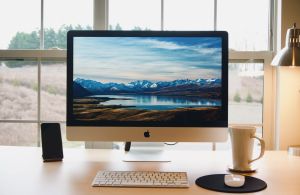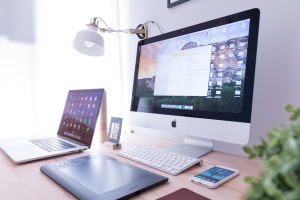If you own a Mac, you’re likely aware of the occasional problems that can cause headaches. It may slow down, display error messages, and before you know it, a pile of errors can accumulate if not addressed promptly.
Fortunately, Mac OS is an excellent system that provides support to help you resolve these everyday problems with ease and speed. In this article, we will guide you through fixing some of the most commonly encountered problems with Mac!

Common macOS Problems and Troubleshooting Macbook
We all may have macOS problems like Mac overheating, but no worry, here are some troubleshooting tips for MacBook:
#1 Mice Cursor Not Moving
Almost every Mac user has encountered the dreaded spinning beach ball. Whenever your Mac freezes, the cursor turns into a seemingly friendly beach ball that keeps spinning and prevents you from clicking on anything. To manually stop the download process forcibly, try the Cmd+Q combination. Another option is to kill the process through the corresponding panel, which you can open with the Cmd + Option + Esc keyboard shortcut. If you are not at all lucky, you will have to wait until the background process is completed.
#2 Mac is Slow
Your Mac, just like any computer, utilizes its physical memory to optimize performance by storing personal files and apps. However, when your computer becomes cluttered with files, it can lead to slowdowns and crashes.
You should start by cleaning up your Downloads folder. Often, we forget to empty the Trash folder where downloaded files are stored. You’ll frequently discover items that you no longer need and haven’t used in a while, taking up valuable space.
Also, remember to keep an eye on the active software using your Activity Monitor. Simply open Spotlight using the Command + Space command, type in “Monitor,” and select the first option. Here you’ll find a list of your most demanding apps. You can close them to free up RAM and improve system performance.
Another solution that applies to a slow Mac network is to use VPN apps. A good VPN for Mac can remove not only geographic restrictions but also protect against channel throttling. Try to download VeePN and experience it. VeePN is one of the high-tech VPNs that are trustworthy and fast.
#3 Kernel Panic Message
If your Mac suddenly shows a kernel panic screen, make sure to note down the time it occurred and then restart your computer. Once macOS has rebooted, you should see a log file on your desktop. If you can’t find it there, you can manually locate it by holding the Option key while clicking the Go menu in Finder, then selecting Library. When the appropriate Finder window pops up, you need to follow the Logs/DiagnosticReports path. It should contain a file with the panic extension. If you contact Apple’s support agent, they might request this file to troubleshoot the panic issue. If you wish, you can read it yourself. All you have to do is open it with a notepad. Pay attention to the timestamp. Near it, there will definitely be the reason for the kernel panic.
#4 Mac Won’t Shut Down
Is your Mac ignoring the shutdown task? You have several fixes at your disposal. First, check if there’s an app on your Dock that’s bouncing around. Usually, these are apps that require you to save files before closing and letting you shut off your Mac. If that’s the case, simply follow the previous steps! You waited, but the computer continues to work? All that remains is to force it to turn off. Just hold down the power button for about 5 seconds and it will turn off. Remember, this final method is only for emergencies and shouldn’t be used frequently.
#5 Peripherals Not Working
Sure thing! Even Macs can get confused by peripherals. You can connect various external devices to your USB-C or Thunderbolt ports, such as printers, cameras, storage drives, and network appliances. To troubleshoot any issues, start by unplugging accessories one by one. After each disconnect, restart your computer to identify which accessory is causing problems. You can also try adjusting the settings on your peripheral device or revert to default settings to see if that resolves the issue. The problem may lie in the periphery, so it will not be superfluous to check them for serviceability. Try connecting to different ports and with different cables.
#6 App Not Responding on Mac
Your software, like Handbrake, may stop responding or crashes to system requests and you will have to force quit it. This is not a difficult task. Try right-clicking and choosing Force Quit. To enter the Dockpad, you need to press the combination Command + Option + Escape.
#7 Screen Issues
A rather annoying problem when the Mac display starts not working the way you want it to. It can even be a physical failure, but it’s too early to get ahead of yourself, it’s better to check other causes first.
The first step is to check the brightness. Maybe she’s too low. If unlucky, try a factory reset. This helps in case of screen flicker. You should go to System Preferences > Display and activate the Default for Display mode.
Incorrect refresh rate is a common problem. It is reasonable to assume that in this case. You should conduct your own experiment by changing the frequencies of the external screen. Also, try turning off or on-screen mirroring.
Conclusion
Even Apple’s Mac computers aren’t exempt from issues. Before considering paid servicing for a faulty Mac, give our free troubleshooting tips a try. Keep in mind, numerous hardware problems on the Mac can often be resolved simply by adjusting a few settings.

